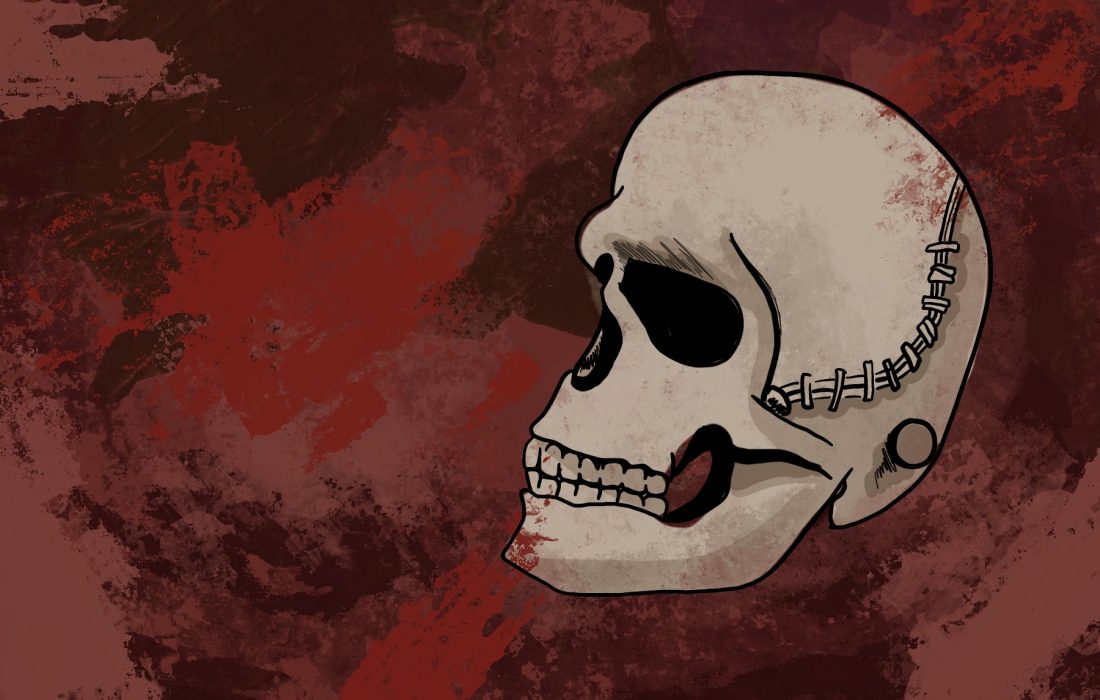Writer Allison Treanor reflects on her love for Mary Shelley’s “Frankenstein”
Bookmarked: ‘Frankenstein’ is a Centuries-long Staple
I read “Frankenstein” last year after watching a YouTube video that piqued my interest, and although I struggled with the 200-year-old diction, the fascinating and morally gray story captivated me.
I was so inspired I actually enjoyed writing my Advanced Placement Literature exam essay on the novel, and it’s the first novel I’ve ever bought multiple copies of — four, to be exact.
During my second read-through, I fell even further in love.
“Frankenstein” was first imagined by a 19-year-old Mary Shelley on a summer trip with her husband Percy Shelley and Romantic era author Lord Byron, according to the foreword to the Penguin Classics hardcover edition. On a stormy night by the fire, they all conspired to come up with ghost stories. Her friends all started ideas, but Shelley conceived nothing.
Until that night, on the verge of sleep, she had a vision.
“I saw — with shut eyes, but acute mental vision — I saw the pale student of the unhallowed arts kneeling beside the thing he had put together,” Shelley wrote in the introduction.
The novel begins with the narrative of Captain Walton, a sailor on a journey to the arctic to find the North Pole.
On this journey, he discovers a disheveled traveler, Victor Frankenstein, who recounts to the captain how he arrived in the arctic.
Victor comes from an affluent, loving family and attends a prestigious university. He had a love for the sciences that transformed into an obsession with creating life.
For months he toils at making a perfect being. Finally, after countless weeks with little rest, he succeeds and Shelley’s vision comes to life.
“By the glimmer of the half-distinguished light, I saw the dull yellow eye of the creature open; it breathed hard, and a convulsive motion agitated its limbs,” Victor narrates.
After creating the monster, Victor runs away and almost forgets about his creation. He wonders if it was even real, until the monster commits an atrocity Victor must face.
They meet on a stormy mountain, where the monster relays his tragic tale to Victor, how he had earned nothing but violence from all who met him, despite having good intentions at first.
The monster’s tale is the heart of the book and one of the most compelling and moving stories ever recounted in literature. Despite his atrocities, I sympathize with the creation. His retention of hope — despite his lonely existence — and determination to live humanizes him beyond what the reader or Victor anticipates.
“Life, although it may be an accumulation of anguish, is dear to me, and I will defend it,” the monster tells him.
To end his suffering, the monster asks Victor to make him another of his kind, a female monster he can spend his life with. Victor refuses, and the monster proceeds to kill his best friend and wife as revenge. With nothing left to lose, the two chase each other on a quest for vengeance across the world.
Although he loses everything, Victor succeeds in convincing Captain Walton to turn back on his overly ambitious quest, saving his and his crew’s life.
The book may be viewed as another story of romantic triumph in this regard, of one man’s error teaching another. Romantic, vivid descriptions of the natural setting create a paradox between Victor’s admiration of nature despite his desecration of it.
The book has a more modern interpretation of being a tale of horror: a madman creates a monster which wreaks havoc on unsuspecting innocents. This has been proliferated by modern film iterations of “Frankenstein,” which often mistakenly name the monster Frankenstein, creating a protagonistic blend.
The genre “Frankenstein” left the biggest legacy on is science fiction, as it’s largely credited as the first work in the genre. The novel flips the dominant genre of romanticism, where men were brave heroes overcoming their circumstances.
As a brilliant woman in the 1700s, Shelley was likely isolated from the rest of society. Reading the monster’s chapters eerily resembles the female experience, where the monster is an outsider in the world of man.
Perhaps my favorite aspect of “Frankenstein” is the lack of a satisfying ending. Captain Walton’s salvation is the only semblance of a positive outcome. Shelley provides no out, no clear hero.
But there’s also no villains.
Victor, although blinded by pride and ambition, made the monster with good intentions. He wanted to save people, to solve death and make the world a better place. His creation is the opposite — a killer and monster who ruins his life.
The work is revolutionary in its defiance to depict man as an archetypical hero. In “Frankenstein,” man and monster are convoluted.
Having lived through the industrial revolution, Shelley saw how men’s ambition led to terrible suffering in pursuit of economic gain. We see Victor Frankenstein adopt this same mindset in the novel, disregarding life for progress.
In a world in which humankind destroys more and more in the name of “development,” Shelley’s novel now begs the question: are we all as complicit as Frankenstein?
Featured image by Hanna Houser / The Phoenix

